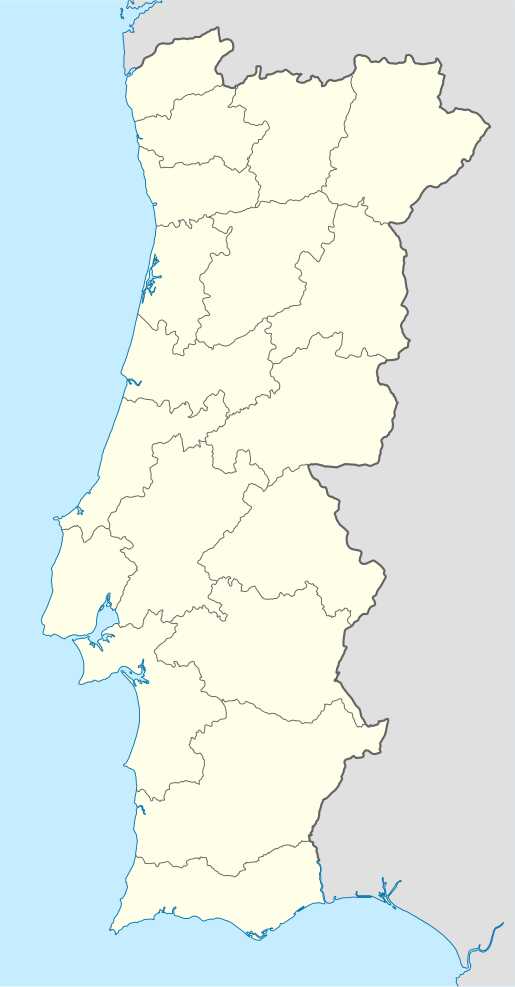Abrunhosa-a-Velha
Abrunhosa-a-Velha is a civil parish in the municipality of Mangualde in the central sub-region of Dão-Lafões in Portugal. The population in 2011 was 563,[1] in an area of 17.30 km².[2]
Abrunhosa-a-Velha | |
|---|---|
 Abrunhosa-a-Velha Location in Portugal | |
| Coordinates: 40.579°N 7.643°W | |
| Country | |
| Region | Centro |
| Intermunic. comm. | Viseu Dão Lafões |
| District | Viseu |
| Municipality | Mangualde |
| Area | |
| • Total | 17.30 km2 (6.68 sq mi) |
| Elevation | 423 m (1,388 ft) |
| Population (2011) | |
| • Total | 563 |
| • Density | 33/km2 (84/sq mi) |
| Time zone | UTC±00:00 (WET) |
| • Summer (DST) | UTC+01:00 (WEST) |
| Postal code | 3530 |
| Patron | Santa Cecília |
Geography
The parish includes several settlements, not only including Abrunhosa-a-Velha, but also Vila Mendo de Tavares and Gouveia-Gare: a population of 880 inhabitants.[3]
It is served by rail services through its Abrunhosa-a-Velha and Gouveia railway stations.[3]
History
Around 2 kilometres (1.2 mi) from the main village is the hermitage of Nossa Senhora dos Verdes, which was founded around 1600, which is the basis for the modern parish.[3] A pillory classified as property of public interest (Decree 23122, 11 October 1933), served the civil judge during the period, when that official occupied a local building (identifiable the building with a 15th-century Manueline window).[3]
Around 1608, a papal bull conceded indulgences to the Irmandade de Nossa Senhora dos Verdes de Abrunhosa-a-Velha (Brotherhood of Nossa Senhora dos Verdes).[3] The chapel was still standing following a plague of grasshoppers that destroyed the municipality, part of Fornos de Algodres, across the Serra do Bom Sucesso and parish of Castelo (in Penalva do Castelo).[3] Since this period, on the first Monday of Holy Spirit, a pilgrimage (both religious and devotional) occurs in the parish.[3]
When in the 18th century, Pais Amaral de Mangualde was made the donatarys of Abrunhosa-a-Velha, he also received for the small village, the category of vila (town).[3]
In addition to Vila Mendo de Tavares, this region was part of one municipality: Tavares, with its own civil judge and comarca administration.[3] The captain-major and five ordinance officials guarded the outpost, while a superintendency for local tithes was invested in the juízo de fora of Mangualde and Tavares (in addition to two smaller municipalities at the time).[3]
By 1811, the donatary was already part of the royal possessions.[3]
Culture
Annually, the parish is the center of festivals in honour of Saint Cecilia (village of Abrunhosa-a-Velha) and Saint Dominic (in Vila Mendo de Tavares).[3]
References
- Instituto Nacional de Estatística (INE), Census 2011 results according to the 2013 administrative division of Portugal
- "Áreas das freguesias, concelhos, distritos e país". Archived from the original on 2018-11-05. Retrieved 2018-11-05.
- Câmara Municipal, ed. (2010). "Freguesia de Abrunhosa-a-Velha" (in Portuguese). Câmara Municipal of Mangualde. Retrieved 5 September 2011.